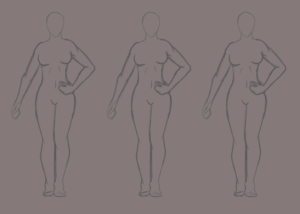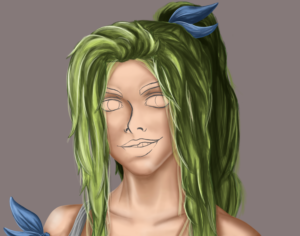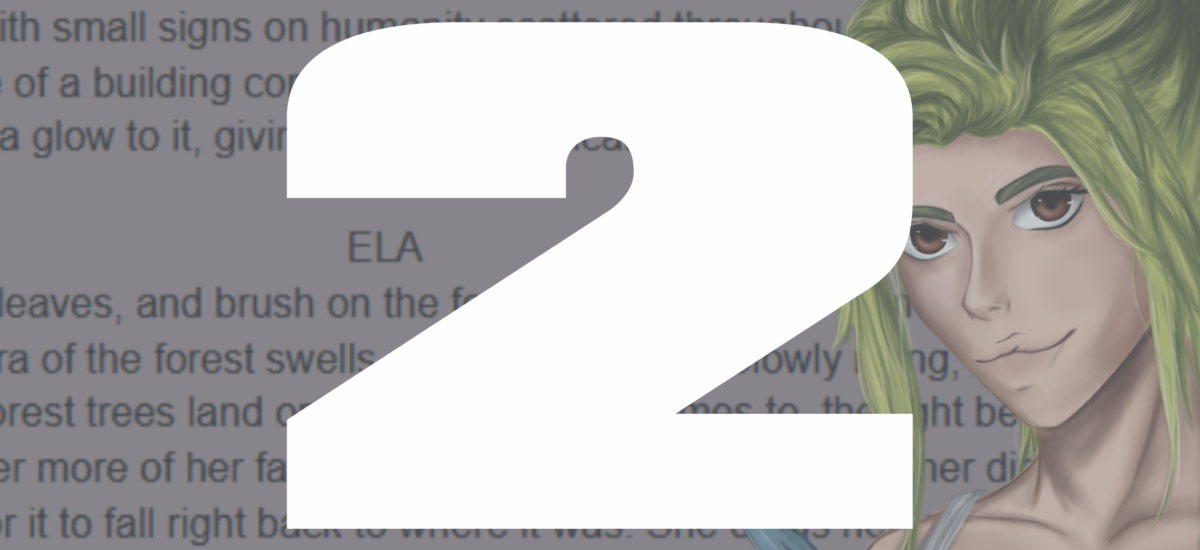Ian Haddow
Reintroducing Animation in the West
Abstract
Throughout the years, western 2D animation has changed dramatically, and is straying more and more towards both crude humor, and artwork. This has caused a stigma to form about the art of animation within the west, which is one of fast-food fun that doesn’t hold much meaning. An entire form of artistic storytelling is dying off within our culture, while comparatively to other cultures, the same form of storytelling is thriving. I wish to make a change by showcasing what animation can be, and how far it can go, by writing and animating my own short story inspired by the Gilgamesh epic. The story will feature a female lead awaking in a strange and desolate world where the natural is being repressed by the man-made. The major point of conflict will be that the lead will be the reason that the world came to be this way. I will also be documenting the process in which I conceptualize my characters and environments in order to give the viewer a better understanding of everything that goes into the process of animation.
The Problem
Take a look at a major western station producing work aimed towards an older audience, and you’ll come to find that it’s more or less comprised of uninspired, crude, immature comedy shows. For example, the Adult Swim show titled Mr. Pickles. The synopsis of this show is simple, there is a seemingly normal house-hold, but as you look on the inside you’ll see that their pet dog is Satan reincarnate and goes on violent a gory endeavors each episode. That is the entire show, no character development or plot points, just a basic comedy where the joke is the same thing every episode. Very similar to Happy Tree Friends, a show that stopped airing in 2014; right around the time when Mr. Pickles began airing. On top of it all the art style is aiming to be ugly, and generally speaking the animation isn’t all that dynamic, although it does have a shot sprinkled in where the animation is high quality. (See the sunrise sequence of Mr. Pickles) So despite this show very brazenly being aimed towards an older audience, that doesn’t necessarily mean that it’s mature. This is becoming a popular mindset about animation, at least half of the mindset. To see the other side, we need to delve into the reason why such violent and crude shows were produced to begin with.

Animation in the west has another stigma surrounding it, and that is one of a more childish nature. As animation gained popularity through the years, it began to be aimed more towards a younger audience, which caused a degree of irritation within older audiences. So the crude shows we see so much of today became a response to this, over the top violent or crude shows. So it’s a constant back and forth of extremes within the medium, making it difficult to convince anyone of the general populous to even consider it as a serious art form.
The Solution
Despite the fact that we’ve had several subpar works of animation produced from the west, that doesn’t mean it’s all bad. A recent show geared towards adults, Rick and Morty, has managed to capture both a serious and comedic tone relatively well. However, it still has some issues such as the tone shifts being a bit too sharp at times, and of course the animation isn’t exactly nice to look at. This is still a decent example at how some western writers and animators have been attempting to create something more than nonsensical shock value humor. Yet despite their efforts, it’s still a bit too crude and aesthetically ugly to make a change within the industry.
One major aspect that’s deeply ingrained in western animation is the want to have it always run at a clean 24 frames per second, or perhaps I should that the animation itself is made at 24 fps. What I mean by this is that there are several techniques used to animate, the more common ways are referred to as 1’s, 2’s, 3’s and 4’s. These numbers are referring to the frame rate at which it is animated; not replayed at. 1’s is animated at 24 fps, 2’s is animated at 12 fps and 3’s is animated at 8 fps. What this translates to is that each frame drawn when animating in 3’s is shown on screen for three frames, so the animation is still being played at 24 fps.
So with this information, we can start to look at how western animation always wants their shows to be animated at the full 24 fps, or in 1’s. This creates a very smooth looking animation, however it’s very time consuming and difficult to maintain, that has less movement and is generally not very dynamic. Now in order to get around this issue of desiring animating in 1’s, but not having the time or manpower to do so, the general technique is to build base vector models that can do basic movements. A common example of this is Family guy; a show that has a bunch of base character models that don’t have too much range of motion. The drawing you see of Peter standing in the beginning of an episode will most likely be the same drawing you see at the end, or even in a completely separate episode. This is possible because they have a database of pre-drawn character models, character faces, and environments. Vector animation is great for certain things, like quickly producing episodes of a show that generally doesn’t have dynamic camera angles or much movement at all. Vector animation generally cannot produce highly active works, yet it can produce an easy and clean 24 fps animation.
Compare this to shows that animate on 2’s, 3’s, or 4’s and you can see the difference. Generally when we start to move past 1’s, vector gets thrown out the window and hand-drawn dominates the scene. Each frame is drawn by someone, and due to the frame rate in which their animating, the artists have to draw their own motion blur and smears into the frames to give the illusion of fast movement. This form of animation is far more dynamic and interesting to watch, while it technically may not be as smooth or easy to produce, it opens the doorways to dramatic artistic interpretation.
So In order to really show the west the power that animation can hold, a high quality piece of hand-drawn work needs to be produced. A work where there’s a continuous story and that is brimming with visual storytelling, one that has fluid hand-drawn animation that all can appreciate.
I am aiming to create a story focused on character growth around a rather environmentalist message. Inspired by the Gilgamesh epic, our main character will be a modern day Enkidu fighting for the natural, and the main antagonist of the story will be inspired by Gilgamesh to an extent. The main setting will start off in an old forest that seems to have grown over a ruined city with our main character, Ela, attempting to survive within it. The viewer won’t know how long she’s been living their, but they’ll get visual cues to understand that it’s been a decent amount of time, as she’ll have a small hut structure she built by a tree and is living in. However something will feel out of place about it all, between he using old road signs and pieces of modern civilization as things such as cooking and patching up her hut as well as her current appearance. She’ll be wearing what appears to be modern workout gear that’s been a bit beaten up, inviting the viewer to ask how exactly she got there, and who she is.

I’ll be going through a character design process for each character, the start of the process is to create a base and to throw some idea sketches on top.


After doing this process, I try to refine the sketch and make a full body render of the character, to really bring them to life and get a better feel for who they are. To further the idea of bringing them to life, generally a portrait will be painted of them as well.



Once the character has been fully designed, I go into the stages of adapting them into a character sheet for animation. This process is simplifying shapes and colors to allow for a more animation friendly design. I’ll be using Naohiro Shintani as inspiration for this section, as he has a mastery of how to create simplistic yet engaging animation sheets.

Another element that will be created by me will be the environments, and the tone they set, so of course concept art will be produced for these scenes as well. For example, the first scene will be of a rough looking hut in a heavily forested area, with a rather calming and almost mystical aura to it. To make sure I know exactly what I’m looking for, and to see what it looks like, I’ll be creating a piece of concept art for this scene. Of course there will be concept art for every major environment we’ll be encountering within the story.
Works Cited
de Juan, Christina & Bodenheimer, Bobby. (2006). Re-using traditional animation: Methods for semi-automatic segmentation and inbetweening. 223-232. 10.1145/1218064.1218095.
Dumont, Jeff. “The Double-Edged Stigma Faced By Western Animation.” The Artifice, 27 Oct. 2017, the-artifice.com/stigma-western-animation/
Gromek, Tracy. “Ones vs. Twos.” STOP MOTION, 12 Feb. 2012, https://stopmotionatparsons.wordpress.com/2012/01/28/ones-vs-twos/.
Riki, J.K. “How Fast Should You Animate?” Animator Island, 9 Aug. 2015, https://www.animatorisland.com/how-fast-should-you-animate/?v=7516fd43adaa.
Von Busack, Richard (May 24, 2006). “In Walt’s Vaults”. Metroactive.
Timeline
- Research
- General research
- Study dynamic animation
- Study character arcs
iii. Study the commonly referred to “renaissance age of American animation”
- Disney’s transition from 2D to 3D animation
- How American animation inspired Japanese animation, vice versa
- How to approach animation
- Master studies of current and past prominent animators
- When designing characters and environment, utilize the student body and general audience to figure out how to continue.
iii. Post storyboards to receive critique
- Capstone
- Design
- Design the characters with Photoshop
- Design the environment with Photoshop
iii. Design the evil organization – TERRA
- Apply backstory of main character to environment for visual story telling
- Tell a story through background elements – Some of the fragments of a past city will have TERRA on them
- Test character design and environmental aesthetic on a varied group of people.
vii. Create in-universe logos and signage to make the environment feel more realistic with Illustrator
viii. Create a promotional website detailing the process of designing for an animation with Sketch
- Script Writing
- Explore main characters history with the forest
- Suggest memory loss within the main character
iii. Begin to explain why main character is somewhat savage
- Learn of the TERRA group who are aiming to use the energy of the forest to run their high end cities
- Despite hearing about high end cities, we’ll only ever see slums, suggesting that only a select few get the boon of a privileged life
- Learn that perhaps this is the cause of something the main character did once upon a time
vii. Test story on a varied group of people
- Storyboarding and Animation
- Draw and color the story boards for entire animation
- After testing storyboards on public, make adjustments and begin tweening
iii. Voice work will be introduced once storyboards are complete
- Add ambient noise and music
- Small group showing
- Final release
Needs
In order to create a full fledged animation with sound design and voice, I will require funding for several aspects. The major players being the software needed to create the animation as well as a website to promote and show off the animation and it’s design process, and of course the voice talent and musicians to bring the animation further to life.
The current budget looks like:
Software:
Adobe Creative Cloud License for 6 Months: $317.94
Clip Studio Paint EX: $169.00
Sketch: $99.00
Other Work:
Create an original soundtrack: $252.00
Voice Actors: $84.00
Total: $921.94

You must be logged in to post a comment.